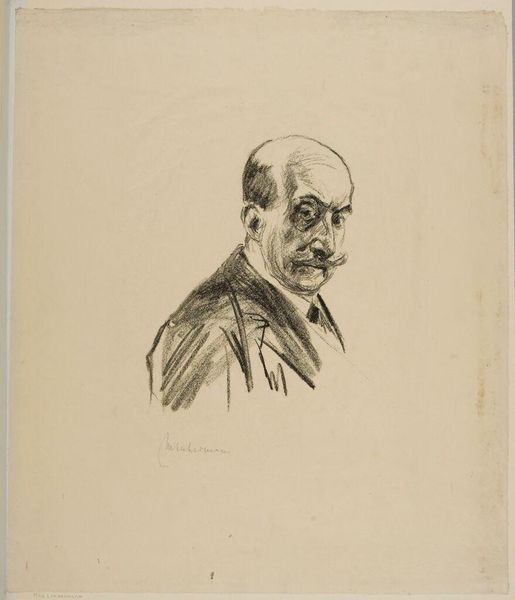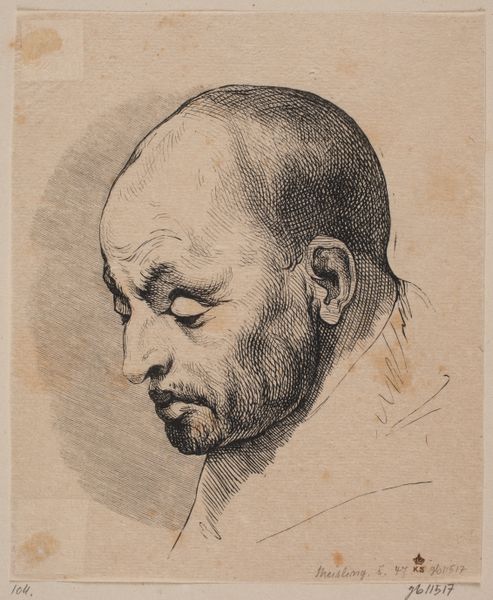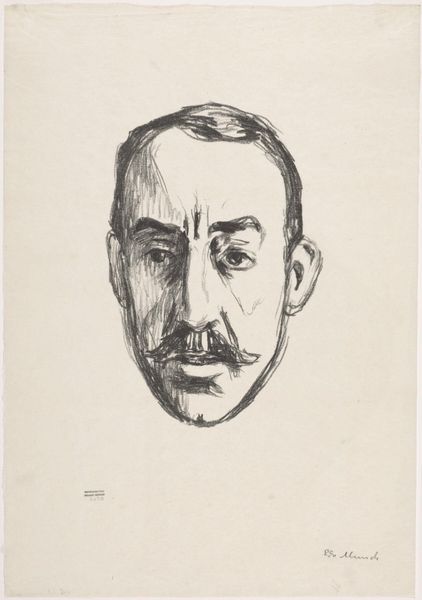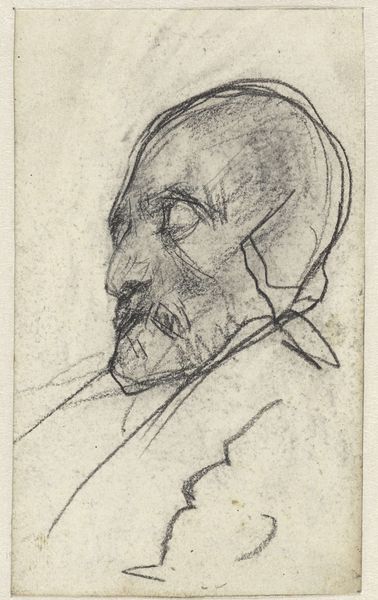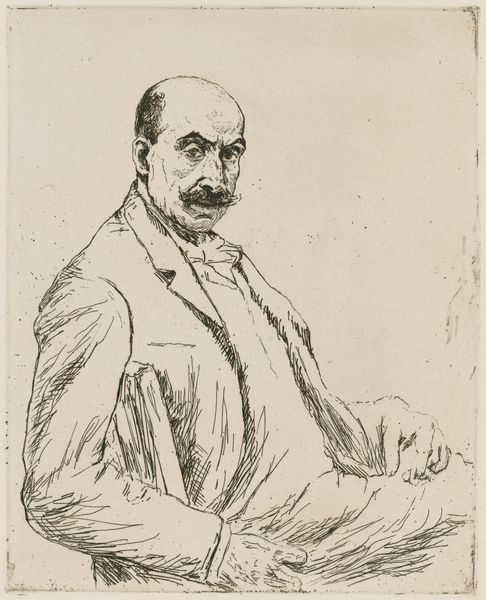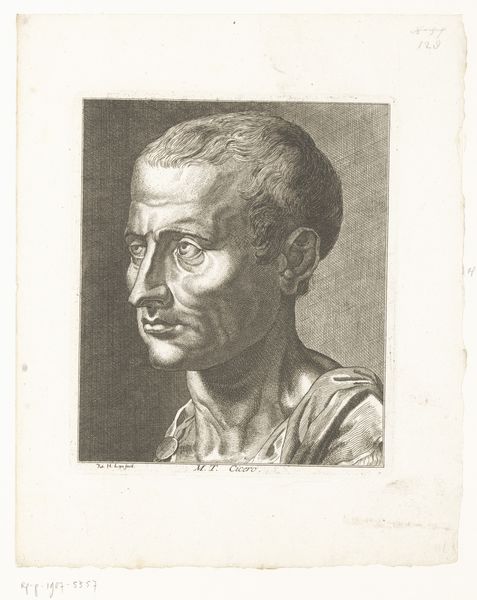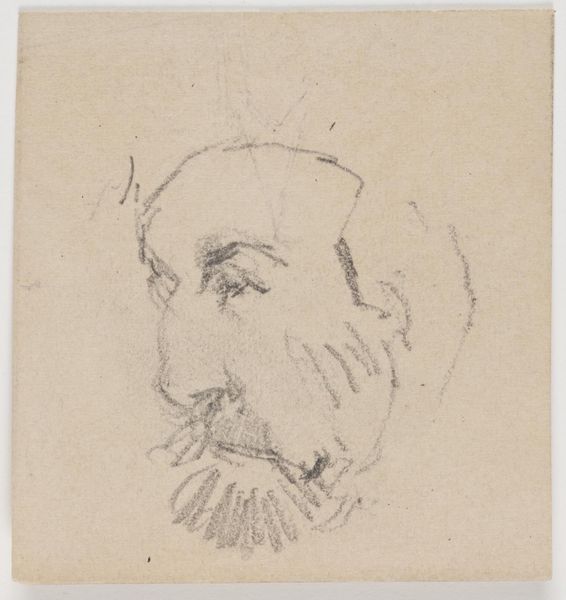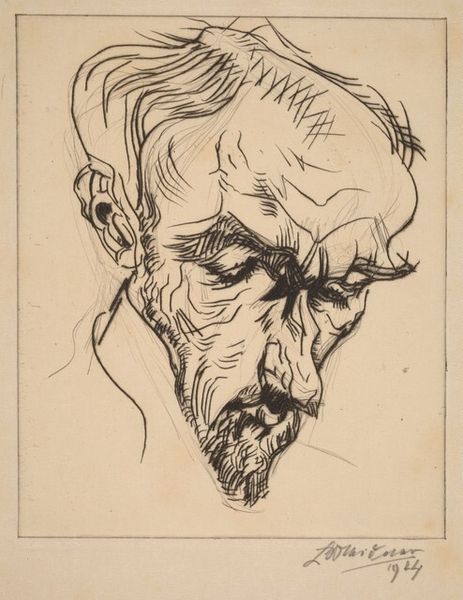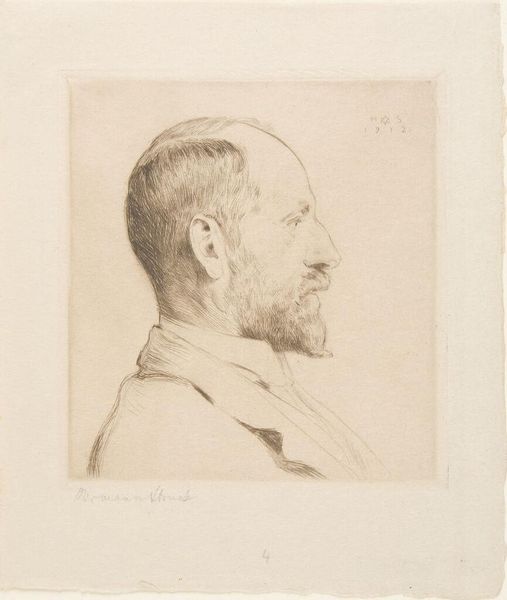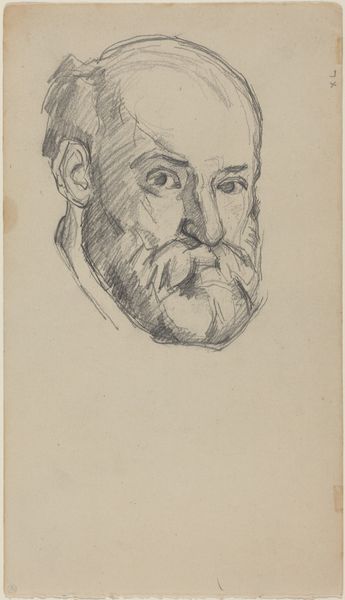
drawing, print, ink
#
portrait
#
drawing
# print
#
figuration
#
ink
#
line
#
portrait drawing
#
realism
Dimensions: 108 mm (height) x 135 mm (width) (bladmaal)
Curator: Look at the economical use of line here! What do you make of this print by H.P. Hansen, titled "Don Quixote?" It's from sometime between 1829 and 1899. Editor: My first thought is weariness. The heavy, almost frantic ink strokes around the eyes give the impression of a man profoundly tired, perhaps disillusioned. Is this how Hansen interpreted the character? Curator: It certainly seems so. He emphasizes the idealism etched in Don Quixote’s face – the almost manic gleam in his eyes juxtaposed with the sagging features. The sharp nose and goatee become visual symbols of his deluded nobility. It makes me think of Cervantes' themes of imagination versus reality. Editor: I’m curious about the choice of ink and printmaking for such a subject. Was it meant for mass distribution? The lines, though expressive, have a reproducible quality that contrasts sharply with the singular heroism Quixote embodies. What statement does that make? Was Hansen reflecting on the commodification of heroism, even in art? Curator: That's insightful. Consider how prints often democratized art, making images and ideas accessible to a broader public. Perhaps Hansen saw Quixote's story as a universally resonant one, meant to inspire even the most ordinary person. It suggests the ideal is attainable, if we are ready to charge towards windmills. Editor: Or that mass production flattens nuanced meaning, turning a complex figure into a simple emblem. What's more, what kind of paper and ink did Hansen have access to? I would venture to guess this wasn't expensive materials. The quick gestures speak of economy in resources, or an urgency of creative production with minimal material constraints. It's all pretty striking, isn't it? Curator: Absolutely. It really causes one to ponder the intersection of idealism and reality. It leaves us asking whether it's a warning or encouragement for our present day. Editor: For me it triggers the thought: how the means of reproduction influence not only the image itself but the reach and meaning of its message. Intriguing.
Comments
No comments
Be the first to comment and join the conversation on the ultimate creative platform.
